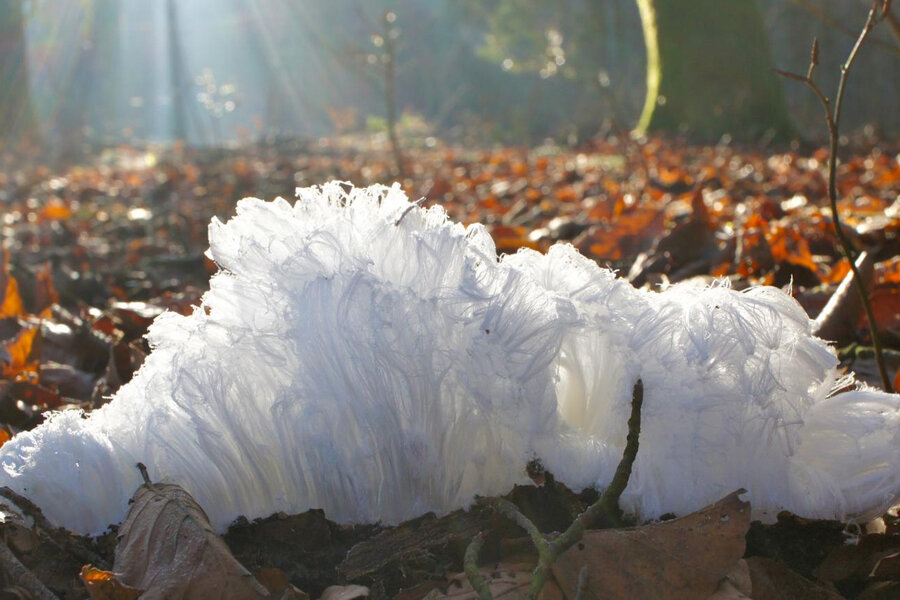What in the world is 'hair ice'? Scientists explain bizarre phenomenon.
Loading...
A strange phenomenon known as "hair ice" has been found to be due, in large part, to a specific species of fungus, say German researchers in a paper published on Wednesday in Biogeosciences, an open-access journal of the European Geosciences Union. The fungus, Exidiopsis effusa, was found on all wood that exhibited the strange ice phenomenon.
“Hair ice” is the term given to ice of an odd texture found growing on rotten branches and dead wood that resembles fine crystalline hair. It only grows in very specific environments – humid, where the temperature is just below freezing – and resembles silk or candy floss.
“When we saw hair ice for the first time on a forest walk, we were surprised by its beauty,” said Christian Mätzler, of the Institute of Applied Physics at the University of Bern in Switzerland, in a press release. "Sparked by curiosity, we started investigating this phenomenon, at first using simple tests, such as letting hair ice melt in our hands until it melted completely."
Dr. Mätzler and two other researchers – a physicist, biologist, and chemist in all – set to investigate the origin of hair ice.
Alfred Wegener, the scientist responsible for original research in plate tectonics, had studied hair ice in 1918, and theorized that there were biological factors playing into the formation of the ice’s strange shape.
The team discovered through experiment that there was a single species of fungus present in all instances of hair ice, and that hair ice could be replicated under similar conditions in a lab using that same fungus.
The question of the fungus’s purpose, however, was a key to the paper’s conclusion. Originally thought to change the temperature of the wood and aid in the ice growth, the researchers instead found that the fungus instead served to create the crystalline structure after the ice had already started to grow.
“The fungus plays the role of shaping the ice hairs and preventing them from recrystallization,” the study says.
Ice on the dead wood tested grew at a constant rate and crystallized as ice would on any other organic surface, but those with the fungus grew the strange hairlike structure. Once a fungicide was applied or the board was heated, the hair ice disappeared.
The team’s belief in the impact on recrystallization is based on previous studies showing recrystallization inhibitors in lignosulfonate in a 1951 paper. That same property was found in the Exidiopsis effusa fungus.
However, the team did not discover what biological process created the hair shape, only that the fungus played a role in its shaping.
“Although the fungus effect is still a mystery, it must be directly related to the hair-ice shape because the suppression of hair-ice growth acts immediately after the fungus activity is stopped,” the paper concludes.








